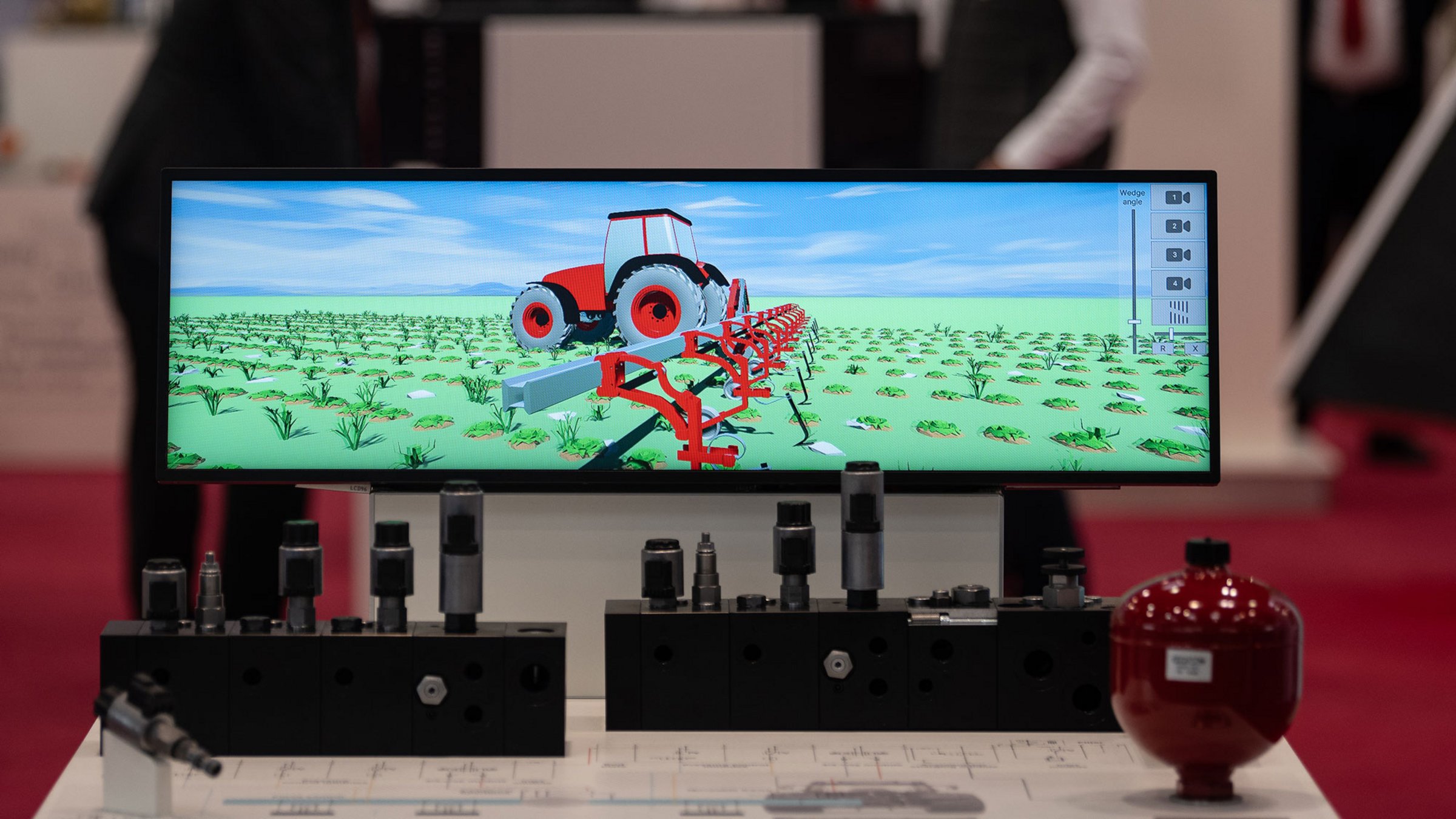Digitalization on the farm: status quo
Digitalization in crop farming will be a key topic at Agritechnica 2025. Digital solutions continue to advance and are already widely used in practice today, bringing benefits to conventional and organic farms alike. Digital technologies make it possible to use a wide range of data that enables farm managers to make informed decisions, use resources more efficiently and simplify documentation, which makes it possible to operate more profitably and sustainably.
In recent years, the pace of digital expansion has continued to accelerate as a result of the availability of advanced sensor technology and cloud applications. The intelligent networking of production processes is not only taking place on farms, but also in upstream and downstream areas across the entire value chain.
Digitalization offers an efficient tool that helps farmers and the value chain to pursue their economic and ecological requirements.

The opportunities of digitalization are increasingly being exploited
Farmers increasingly recognize the opportunities in digitalization. This was shown by a survey conducted by the digital association Bitkom and the DLG (German Agricultural Society) in 2024: A high proportion of farms already apply fertilizers (36 percent) and pesticides (30 percent) using precision field maps. Predictive maintenance for agricultural machinery is used by a quarter of farms. According to the study, the use of digital technologies in arable farming generally increased between 2022 and 2024. The most common technologies are GPS-controlled agricultural machines, which are used by 69 percent of farms, followed by digital field maps.
The use of digital and smart technologies in agriculture is summarized by the term „smart farming“. According to the German government's Expert Commissions for Research and Innovation (EFI), both the data collected by networked devices and their processing with other context-specific data are used to support farmers in their operational decisions and to automate them. The range of tasks range from automated data collection to the optimization of operational planning and more efficient accounting.

Advantages of digital technologies
Digital technologies can offer a range of benefits in terms of the quality of work and produce as well as ecological and economic criteria. Side benefits such as an improved work-life balance can also be gained. Reduced use of operating resources and increased productivity also have a positive effect on income and can help to stabilize the income situation of the farm.
Examples of digital technologies:
- Driver assistance systems on combine harvesters continuously monitor the quality of the harvested crop (broken grains, impurities) and automatically adjust concave spacing and threshing drum speed as necessary.
- Sensor technology on precision air seeders, together with automated metering devices, monitors the placement (longitudinal distribution, double or incorrect placement, etc.) and adjusts as necessary.
- NIRS sensors on the slurry tanker record the contents of the manure, which enables needs-based crop nutrition.
- NIRS sensors on the forage harvester record the quality of the harvested produce, which offers an improvement to animal nutrition.
- Replacing paper-based farm management with a digital system drastically reduces the high manual effort required for routine and documentation tasks and frees up valuable time and resources.
- Farm management information systems (FMIS) support farm managers in planning, monitoring, documenting and optimizing operational processes through automated data collection and processing, for example through automatically generated field maps.
- GPS-supported steering systems save time, e.g. for headland turns, relieve the strain on drivers, ensure a higher quality of work and enable high quality work results, even at night.
- The automated, application of fertilizers on zones and crop protection products according to digital application field maps offers the possibility of more efficient use of operating resources, which also has an impact on operating costs. The more heterogeneous the areas, the greater the effect of site-specific management.

Significant majority view digitalization as an opportunity
In Germany an increasing number of farms uses digital technologies and processes. The results of the aforementioned study by Bitkom and the DLG show that a large majority (79 percent) of farmers see digitalization as an opportunity for their farm business. Time savings (69 percent), greater efficiency in production (61 percent) and physical relief (57 percent) are cited as the greatest advantages of digital applications.
The farms also express high expectation for the future of the entire sector in digital solutions to make agricultural production more sustainable and efficient at the same time: 80 percent of farmers firmly believe that digital technologies will enable them to make agricultural production more resource-efficient, 91 percent regard them as a tool to save fertilizer, pesticides and other inputs, a further 67 percent to reduce costs in the long term and 60 percent to improve the quality of agricultural products.
Insufficient interoperability and network connection
Data is the foundation for the digitalization of processes in agriculture. Smooth data exchange between all technical components and business partners is crucial for this. At present, digital solutions are still largely characterized by isolated solutions from different manufacturers. Networking with systems and applications from other providers is often not possible or only possible to a limited extent due to a lack of suitable interfaces or data standards. Such compatibility problems make the work of farmers more difficult and ensure that the technical potential of digital solutions cannot be fully exploited in many cases.
Another limiting factor for accelerating the implementation of digital processes in practice is still the inadequate mobile network coverage in many rural areas. Often, only narrowband network access with low data rates is available, which does not allow the use of many real-time-capable and data-intensive applications. Sometimes there is no mobile phone coverage at all. This makes broadband expansion a key issue for the future of rural areas.
Removing barriers to acceptance
In order for digitalization to be implemented quickly and widely in agriculture, those who still have doubts must ultimately also be convinced. Small and medium-sized farms in particular see the relatively high investment requirements as a barrier. Data protection and data sovereignty, interface problems, lack of user-friendliness and lack of IT expertise are other frequently cited barriers to acceptance.
In order to successfully shape the digital transformation in agriculture, the necessary framework conditions must be created to further acceptance. This can include the creation of financial incentive systems as well as the use of digital technology across farms in the form of machine communities. It is also important to strengthen the digital skills of farmers with suitable advisory, training and further education offers so that they can take full advantage of the rapidly developing digital technologies.
Agritechnica provides information on the latest solutions
As the leading platform for innovation in agricultural machinery, this year’s edition of Agritechnica aims to create proximity to digital solutions. With its guiding theme “Touch Smart Efficiency”, Agritechnica invites farmers and contractors to discover the potential and discuss the challenges of implementation. Visitors to the trade fair in Hanover, Germany, will be able to discover the latest digital solutions and receive first-hand advice on their potential for optimizing processes and resources. This will show that Agritechnica's main theme - “Touch Smart Efficiency” - is developing continually from a former vision to a widely practiced reality.
